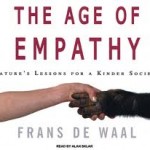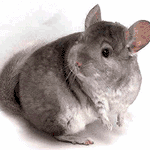Tagged: Nature vs. Nurture
Licking Rat Pups: The Genetics of Nurture
What would happen if humans were like turtles – alone at birth with no mom to guide them back home? We probably would not survive very long before getting attacked and/or eaten by something bigger than us. For many animal species, instinct guides survival. But for humans and other mammal species, nurture as an infant is crucial to our development.
Weaver et al investigated the phenomenon of nurture in rats. They noted that some rat moms extensively licked and groomed their pups, while others ignored their pups. Pups that received attention during the first week of life grew up to be happy and calm, while those that were ignored grew up to be anxious, and were more prone to disease.  Epigenetics studies the genomic changes that occur in response to the external environment. The differences in behavior are due to a change in a glucocortocoid receptor (GR) gene during development. At birth, the gene is highly methylated and inactive. If a rat mother is attentive towards her pups, the pups’ GR gene gradually demethylates, making the gene more active. These pups will be more relaxed in response to stress. Those that were not given attention, and do not express the GR gene, respond poorly to stress. You can try being a rat mom in an interactive game here .
Epigenetics studies the genomic changes that occur in response to the external environment. The differences in behavior are due to a change in a glucocortocoid receptor (GR) gene during development. At birth, the gene is highly methylated and inactive. If a rat mother is attentive towards her pups, the pups’ GR gene gradually demethylates, making the gene more active. These pups will be more relaxed in response to stress. Those that were not given attention, and do not express the GR gene, respond poorly to stress. You can try being a rat mom in an interactive game here .
A related study by McGowan et al studied hippocampal tissue in humans that had committed suicide and been abused as a child, and humans that had committed suicide with no history of child abuse. When compared to controls and subjects that were not abused, the subjects that had been abused had decreased level of a GR protein. This shows that events later in life (such as those leading to a suicide) do not actually alter genetic makeup, rather, it is the early childhood interactions which cause epigenetic changes leading to adult behavior. These data are consistant with those of the rats and show the importance and effect of having proper nurture as a child.
But in reality, how important is it to be calm and controlled in response to stress? Rats are found in urban areas as well as in the wild.
 What were to happen if one of the calm happy rats were to stumble upon a mouse (or, in this case, rat) trap? It would be less concerned about danger and be more likely to die, whereas an anxious rat would be guarded and could better survive the harsh environment.
What were to happen if one of the calm happy rats were to stumble upon a mouse (or, in this case, rat) trap? It would be less concerned about danger and be more likely to die, whereas an anxious rat would be guarded and could better survive the harsh environment.
What is the significance of these epigenetic changes for humans? Maybe living in a developed society has prevented us from realizing just how much nurture plays a role in development. Do those born into a war-ridden society have an inactive GR gene and thus a guarded and anxious personality? This is probably advantageous for survival.
In our society, we will of course never be left alone immediately after birth to fend for ourselves. But, what degree of nurture must we receive in order to grow up to be productive members of society? Why are species like turtles able to survive without a mom? Epigenetic studies will be key in future questions concerning nature and nurture.
All About Empathy
What contributes more to creating a person’s identity (i.e. personality, behavior, intelligence)? Is it genetics, or is it the environment in which the person was raised? In other words, as Francis Galton might ask, is it “nature” or “nurture?"

de Waal's book on empathy
When it comes to how empathetic someone is, Frans de Waal, a Dutch primatologist and ethologist, believes it’s both nature and nurture. He says that a person’s empathy is “innate” – inherited through genes – but also that a person can learn to become more or less empathetic. That seems reasonable; depending on early experiences and education, someone may be more or less of a certain characteristic.
But how is empathy innate? Two NewScientist writers, Philip Cohen and Ewen Callaway, wrote articles discussing the areas in our brains called the anterior cingulate cortex (ACC) and the anterior insula (AI), which become active not only when we are in pain but also when others are.
Imaging studies, cited in their articles, found a positive correlation between a volunteer’s reported empathy for a person in pain and activity in the pain-processing areas of the volunteer’s brain. This has led Cohen to believe, “Humans are hardwired to feel empathy.”
For example, in a study led by Shihui Han and colleagues, “17 Chinese and 16 Caucasian (from the US, Europe and Israel) volunteers” were shown videos of strangers, both Caucasian and Chinese, in pain while their brains were scanned using fMRI. While their fMRI results suggested that they responded more empathetically towards volunteers of the same ethnicity or from the same country, their responses actually indicated they “[felt] each other’s pain about equally.”
Interestingly, our brains seem to be “hardwired” to feel more for certain groups over others, whether we notice or not. These groups appear to consist of people we can identify more with, whether through ethnicity, age, gender, or any other in-group.
Frans de Waal would find these results quite understandable. He says, “Empathy is more pronounced the more similar you are to someone, the more close, socially close, you are to someone.” He continues to say that empathy “evolved… for members of any species that is cooperative and social... it’s important to take care of others in the group because you depend on [them], you survive by [them].”
Seemingly then, our brains, and likely those of other species, have evolved to serve a survival advantage; they respond in those pain-processing areas more actively when those like us are in pain, despite what we report as our level of empathy.
While we seem to be hardwired to empathize more with certain groups over others, we’re still united as a species to empathize with one another over those of other species.
Martha Farah, a cognitive neuroscience researcher, suggests that we have a “person network” divided into persons and non-persons, which has promoted closer social bonds within our species. Farah proves that this brain network exists by considering the rare disorder prosopagnosia, which consists of “impaired visual recognition of the human face.” A specific area of the brain can be “selectively” damaged for one to obtain the disorder, demonstrating that specialized areas of the brain exist for discerning other humans.
Whether our brain also specializes in empathy towards non-persons is something to look into. For now, consider yawn contagion, which de Waal discusses with TIME about. He says there is a “deep bodily connection” that allows pets to catch yawns from their owners. This seemingly innate connection seems to break physical barriers with other animals, but what, if any, connection breaks emotional ones? And is it innate, or is it learned?
Have animal rights activists and pet lovers learned to be more empathetic towards non-persons? I’d like to think that it’s not just the influence of my environment that has led me to empathize with my childhood pets or toys – not to mention some of my favorite characters, like Hamm from Toy Story or Patrick from SpongeBob SquarePants.
Whether it is learned, innate, or both, I cannot say, but anthropomorphism seems to explain our emotional connections with non-humans. It breaks the barrier, allowing us to personify or add human characteristics to non-humans. For example, most people would probably like to think of their childhood pets as loved ones with human-like feelings and desires. However, would some stranger halfway across the world feel the same way you do about your pet? Probably not. They’d likely think of it as just another animal, simple as that.
 Most people, if asked if they support animal rights, would probably answer ‘Yes’ or some derivative
Most people, if asked if they support animal rights, would probably answer ‘Yes’ or some derivative of that. But, would they promise to never buy any animal-based products (eggs, meat, suede, leather, or even the chinchilla coat seen on Teresa last week in The Real Housewives of New Jersey)? Most likely not. I mean, for anyone, that’s a hard promise to keep when we have other priorities.
of that. But, would they promise to never buy any animal-based products (eggs, meat, suede, leather, or even the chinchilla coat seen on Teresa last week in The Real Housewives of New Jersey)? Most likely not. I mean, for anyone, that’s a hard promise to keep when we have other priorities.
So how do we go from talking to our pets as if they were humans to absentmindedly buying products that might contain ingredients of an animal just like our pets?
de Waal says we do this through dehumanization. We go about anthropomorphizing our favorite pets, toys, and characters just as we go about dehumanizing them. By removing human characteristics, like emotion or spoken language, we don’t have to feel as bad about buying that leather jacket we always wanted. de Waal reminds us, “We eat nonhuman animals, wear them, perform painful experiments on them, hold them captive for purposes of our own – sometimes in unhealthy condition. We make them work, and we kill them at will.”
So, the next time you shop and find that animal-based product you just NEED to buy, take a second to think about how you’re setting your priorities. Think about how, maybe unconsciously or unintentionally, you are dehumanizing the animals used for the creation of the product you’re about to buy. Couldn’t that animal be from the same species as your favorite TV character, or even your old pet? I think so, easily.
Sources:
Are Humans Actually Selfish – Time
Learning Empathy From Apes – KPBS
Brain's response muted when we see other races in pain – NewScientist
Humans are hardwired to feel others' pain – NewScientist
Primates and Philosphers: How Morality Evolved – Google books